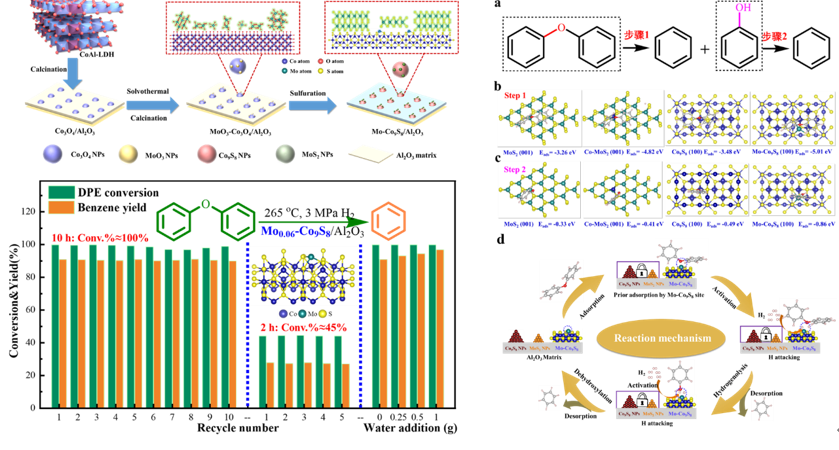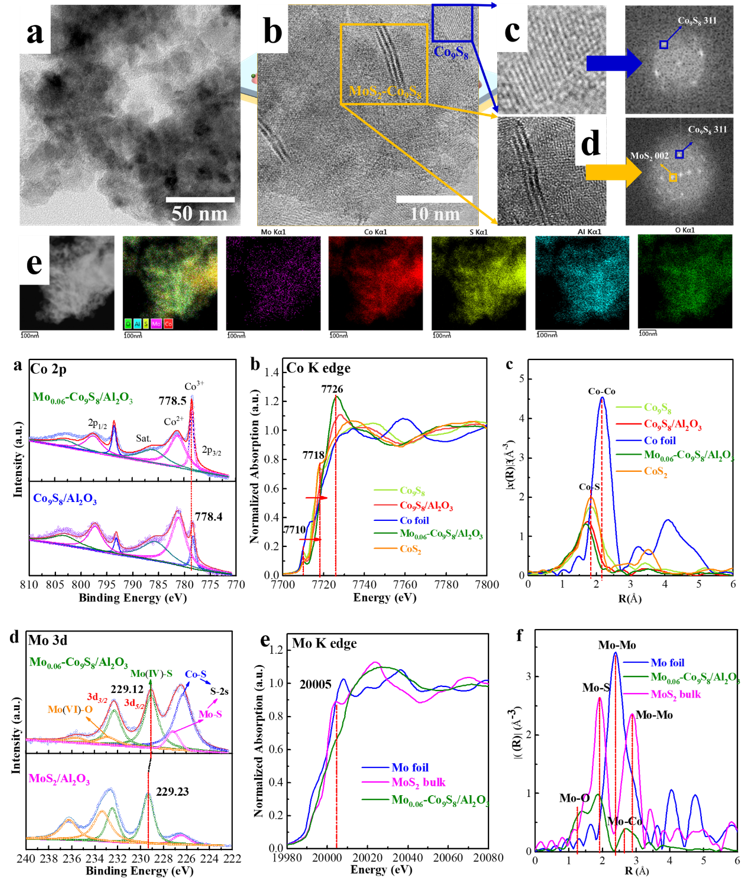Lignocellulosic biomass, an abundant renewable green energy source rich in carbon, is the only renewable resource that can provide liquid biofuels. Compared with traditional petroleum-based jet fuel, the huge advantage of bio-jet fuel is that the CO2 emission during the use process is nearly neutral in the life cycle, which can significantly reduce the emission of greenhouse gases. The unique structure and properties of lignin give it a natural advantage in the preparation of arenes, which are important component of jet fuel. If the C-O and C-C bonds in its structure can be selectively cleaved, lignin can be effectively degraded into monomers or dimers containing 1-2 benzene rings, and can be further converted into jet fuel with suitable carbon number (C8-C16) by catalytic hydrodeoxygenation. In order to realize the efficient conversion of lignin to prepare arenes, the catalyst not only needs to have high activity and high selectivity to arenes, but also needs to have good sulfur resistance and cycle stability. For the sulfide catalyst, its reactivity and stability under reaction conditions still need to be further improved; and the reaction mechanism and structure-activity relationship still need to be further studied and confirmed. Therefore, the research on catalytic conversion of lignin over sulfide catalysts is still an extremely challenging topic.

Recently, Professor Ji’s group from the School of Environmental Science and Engineering constructed a new catalytic material of Mo doped Co9S8 nanoparticles anchored on Al2O3 matrix by a simple method with CoAl-hydrotalcite as a precursor. In this multifunctional assembly Mo-Co9S8/Al2O3 catalyst, the Mo atom is coordinated to three bridging S atoms on the top site of Co9S8, resulting in theoretical CNMo-S= 3. This Mo-Co9S8 interface exhibits electron transfer from Co to Mo sites, and possesses the unique capability for the adsorption of oxygenated compounds, which could selectively convert lignin to arenes with high hydrodeoxygenation activity and selectivity. More importantly, the catalyst displays superior tolerance to high reaction temperature, and resistance against being poisoned by H2O, owing to the anchoring effect of Al2O3 matrix and “protection” of Co9S8. In particular, it also shows compatibility in the conversion of different substrates including lignin bio-oil and real lignin. This work not only establishes an active and high-temperature stable catalyst (MoCo9S8/Al2O3) for the HDO of lignin, but also stimulates mechanism understandings and provides an effective strategy to design more efficient and stable sulfide catalysts for high-temperature reactions in the future. Related research results named <Fabricating high temperature stable Mo-Co9S8/Al2O3 catalyst for selective hydrodeoxygenation of lignin to arenes> has been published in the internationally renowned journal Applied Catalysis B: Environmental (IF=19.052) (https://doi.org/10.1016/j .apcatb.2022.121067).

Professor Ji's group has long been committed to the development of new catalyst materials and green transformation pathway for efficient conversion of biomass, and strives to provide a new green conversion approach for the conversion and utilization of biomass renewable resources. The research topic has important theoretical research value and broad application prospects. In recent years, more than 80 SCI research papers have published in various international high-level academic journals including: Angew. Chem. Int. Ed., ACS Catalysis, Applied Catalysis B: Environmental, ChemSusChem, Green Chemistry, Journal of Catalysis, Journal of Energy Chemistry, Renewable & Sustainable Energy Reviews, ACS Sustainable Chemistry & Engineering, etc. The H-Index of Professor Ji reached 28.
By: School of Environmental Science and Engineering
Editor: Qin Mian






